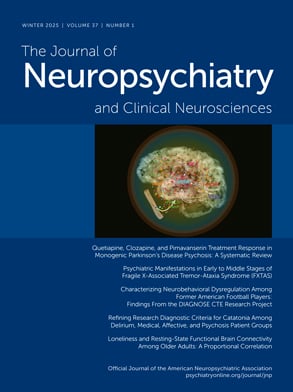SIR: In the summer 2002 issue of the
Journal, Rosenberg et al.
1 reported antidepressant effects after both slow (1 Hz) and fast (5 Hz) repetitive transcranial magnetic stimulation (rTMS) over the left frontal cortex (FC) in patients with posttraumatic stress disorder (PTSD) and comorbid depression. There were no therapeutical differences between the effects of slow and fast rTMS, which is in fact a striking observation. Depressive symptoms are often accompanied by hypoactivity of the left FC, and there is ample evidence that slow rTMS causes neural inhibition, whereas fast rTMS results in neural excitation of the targeted regions. Thus, the widely applied and obvious parameter in studies of treatment for depression is the higher frequency. Moreover, it has been demonstrated in rTMS neuroimaging studies that fast rTMS leads to normalization of left FC hypometabolism. Only a study by Klein et al.
2 used slow rTMS, but they targeted the right FC, assuming that depression is accompanied by an imbalance in neural activity between the left and right FC, favoring the right. Dampening the right FC activity by slow rTMS would restore homeostasis.
When theorizing on the basis of these findings, the antidepressant effects of slow rTMS over the left FC in the Rosenberg et al. study are counterintuitive. The interpretation the authors provided in terms of rTMS effects adjunctive to antidepressant medication and different patient populations is insufficient to explain their paradoxical finding. A more plausible explanation is that slow rTMS restored the functional connectivity in a cortico-cortical depression circuit
3 that connects the left FC with right parietal cortex (PC). This functional connectivity between different cortical areas can be measured by means of EEG coherence analysis.
Interestingly, a recent endocrinological study published in the fall 2001 issue of the journal demonstrated an inverse relationship between the functional connectivity of the left FC and right PC and cortisol, a biochemical marker for depression.
4 This finding suggests that the functional connectivity in this cortico-cortical circuit is reduced in depression. It should be noted that the functional connectivity between different brain areas is not entirely dependent on cortical arousal, indicating that temporal coupling can be modulated without dramatic changes in activity. Crucially, it has been demonstrated that rTMS over the left FC is capable of the modulation of functional connectivity with the right PC.
5 Working from a model comprising the above-noted depression circuit and the assumed capability of slow rTMS to influence functional connectivity, a recent placebo-controlled study by van Honk and Schutter
3 demonstrated reductions in phenomenological, attentional, and physiological indices of depression after slow rTMS over the right PC. The latter findings are in line with our cortico-cortical depression circuit hypothesis
4 and concur with the slow rTMS results of Rosenberg et al.
1In sum, one of the mechanisms by which rTMS studies have established antidepressant effects is the normalization of hypometabolism in the left FC. However, the slow rTMS findings of Rosenberg et al. more likely involve the restoration of the functional connectivity in a left FC–right PC cortico-cortical depression circuit.

